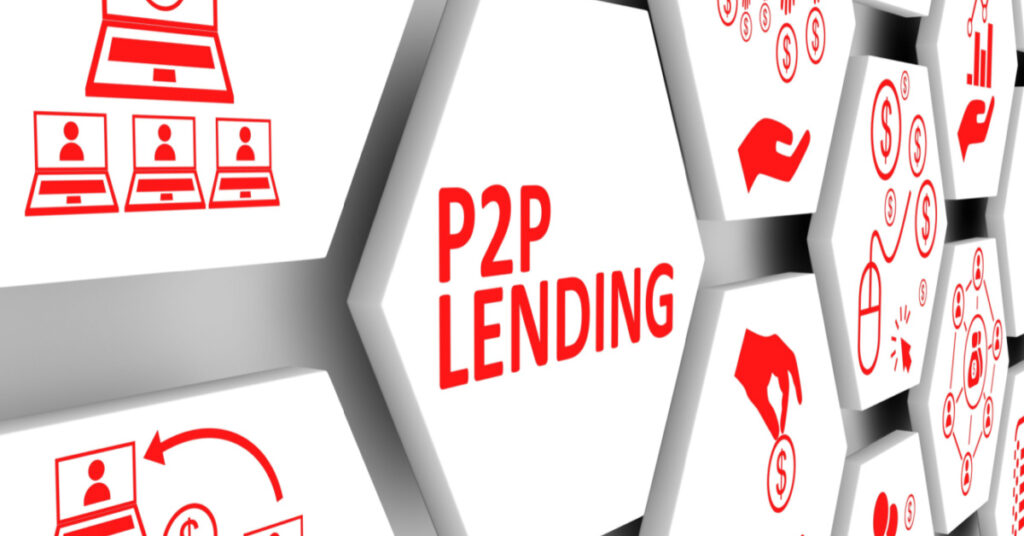Peer-to-peer lending, or P2P for short, was established in the early 2000s as a form of social lending that directly connects investors with small businesses or individuals. For many people, these online platforms offer ideal investment opportunities because the investments often yield above-market returns. That said, P2P lending does come with its share of risks. Before you invest, here’s what you need to know.
Table of Contents
Best Overall Peer-to-Peer Lending Site for Investors: Kiva
Founded in 2005, Kiva is an international nonprofit P2P lender that connects small businesses or micro-entrepreneurs and investors from around the world. The online platform is win/win: It helps entrepreneurs in developing countries access funds that can boost their opportunities, while providing investors with a way to do good while also earning money. As a nonprofit, all investments go directly to funding loans, meaning there aren’t any hidden fees. Investors who wish to help small businesses can choose to invest in this platform without expecting a high return. Loan uses range from purchasing livestock and building inventory to buying real estate.
Kiva has microloans as low as $400, but investors may choose to finance as little as $25. The maximum loan amount is $15,000. The platform boasts a 96% repayment rate. The only drawback is liquidity. Don’t invest any money that you may need to be able to access before the loan term ends.
8 More Top Peer-to-Peer Lending Sites for Investors
Peer-to-peer investing has become dominated in recent years by large investment firms. However, if you’re looking to invest, there are still plenty of opportunities. Here are the some of the best P2P lending sites for investors:
Prosper
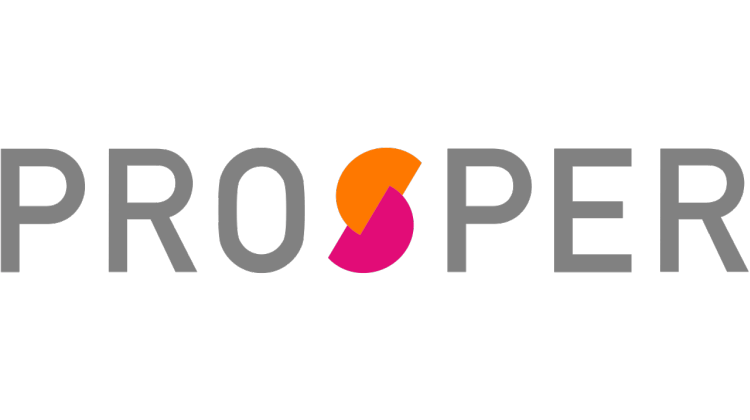
Founded in 2005, Prosper was the first P2P lender established in the U.S. Since then, it’s given out more than $19 billion in funding to over 1 million borrowers.
Prosper offers a mobile app for investors to track their investment performance and manage their portfolios. According to the platform, around 84% of all investors met or exceeded their expected return on investment. Not only that, but the average return on investment is 5.5%.
Investors can invest as little as $25, but they are expected to pay a 1% annual loan servicing fee. The only other drawback is that investors cannot invest more than 10% of their net worth.
Upstart
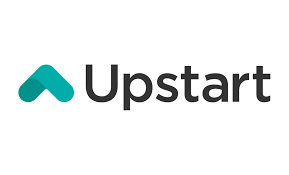
Founded in 2012, Upstart is a well-recognized peer-to-peer lending platform that has funded hundreds of millions of dollars in P2P loans and continues to expand. Upstart uses a basic scoring model to carefully vet all borrowers. However, most borrowers on the platform are younger and have limited credit and employment history.
On the investor side, Upstart requires a minimum investment of $100 and has a 0.5% annual fee. It also provides an opportunity for investors to diversify their portfolios. Investors must be accredited, meaning they must have an annual income of $200,000 or more.
Once an investor funds a consumer loan, they receive principal and interest payments until the loan is paid off. Loan terms are generally 36 or 60 months, and approximately 90% of all loans are paid in full.
Lending Club

Lending Club was established in the early 2000s and has since become the largest P2P lender in the world. It has issued more than $9 billion since it began and has boasted overall positive returns for investors.
In 2018, the average annual return on investment was between 8% and 10%. Although current rates are unknown, Lending Club upholds a reputation for having one of the highest returns on investment.
On average, loan terms are three to five years in length. Investors must pay a 1% annual fee and can invest anywhere from $1,000 to $40,000. Additionally, investors can manually choose their investments or let the system automatically choose for them.
Before 2020, investors could pay in notes (smaller investments in partial loans), but the platform no longer allows this.
Peerform

Established in 2010 by a couple of Wall Street executives, Peerform (now owned by Versara Lending) has highly competitive interest rates as low as 5.99% with a maximum loan amount of $25,000. Typical loan terms are three to five years with no prepayment penalties. Investors can invest in whole or fractional loans, depending on their risk tolerance.
Peerform thoroughly vets all its borrowers before connecting them with potential investors. Every borrower must have a minimum 600 credit score and a debt-to-income ratio of no more than 40%. They also must have had no recent delinquencies, bankruptcies or other major derogatory marks in their financial history. This reduces the risk for investors.
The platform provides a positive, transparent experience to both borrowers and investors. Most investors experience a solid risk-adjusted return and can create a custom portfolio based on their personal preference. Investors can also set financial goals and the system will show them the best way to allocate their capital to achieve those goals. This allows for a more diversified portfolio than other platforms.
Happy Money (formerly Payoff)

A smaller P2P lender, Payoff by Happy Money has helped more than 100,000 borrowers meet their financial goals since its inception. To be eligible, borrowers must have a minimum credit score of 640 and a maximum debt-to-income ratio of 50%.
Loan terms are between two and five years and are repaid in monthly installments. The minimum loan amount is $5,000 in most states, while the maximum amount is $35,000.
The platform also has a feature that lets investors see a potential borrower’s creditworthiness before they lend them money, thus reducing the risk.
Payoff has recently instated some restrictions on investing, so check with them before deciding to invest.
SoFi
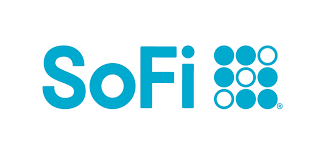
SoFi launched in 2011 as a P2P lender for student loan refinancing but has since expanded to offer an array of financial services. It started offering other types of loans, including personal loans and mortgage loans.
This reputable platform offers competitive rates for borrowers and investors with APRs ranging from 5.99% to 20.89% on average. Loans with a variable rate APR cap out at 14.95%. Typical loan terms are between 24 and 84 months.
The maximum amount for a personal loan is $100,000, but only borrowers who meet strict eligibility requirements (good or excellent credit scores) are eligible for these loans. With high-quality borrowers, there’s a low risk of them defaulting on the loan.
In most cases, neither the borrower nor the investor pays any fees to the platform.
Best Egg
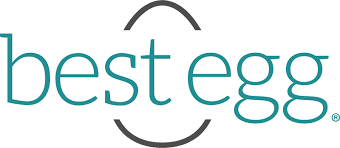
Founded in 2014, Best Egg has given upwards of $11 billion in consumer loans in 47 states. The platform’s process is heavily streamlined and it endeavors to connect the right investor with the right borrower.
Loans start at $2,000 and go up to $50,000 with an APR ranging from 5.99% to 29.99%. Borrowers must have a minimum credit score of 600 and a low debt-to-income ratio (no more than 36%). Loan terms are three to five years but can be repaid early without a fee.
Best Egg does require investors to purchase whole loans, but the platform takes on some of the risks of the loan, which provides a little bit of a safeguard for investors. With high ratings online and transparent lending practices, this accredited platform is known for its low default rates.
SoLo Funds

One of the newer entrants, this startup connects lenders and borrowers. With a structure similar to a cash-advance app, borrowers specify how much they want to borrow, the payback date and how much they’re willing to “tip” the investor who loans them the cash (there is no traditional interest rate.) From there, the online lenders — your peers — search the platform and choose which loan requests they’re willing to fund. If you’re lucky, you’ll find a match.
You’ll be assigned a score based on your risk. The lower your score is, the higher the risk for the investor. So when you start out, you’ll probably need to offer a larger “tip” to entice a lender. Once you’ve established a repayment history you should be able to offer a bit less.
Top Peer-to-Peer Lenders for Small Business Loans
The following peer-to-peer lenders focus on helping small businesses grow and expand.
StreetShares
StreetShares is an award-winning P2P lender dedicated to connecting investors with small business owners to help fund their ventures. Not only does this U.S.-based platform have transparent lending practices, but it also has safeguards against fraud for borrowers and investors alike.
The platform doesn’t just match investors with borrowers. It considers shared characteristics such as if both are military veterans. This helps build rapport between the borrower and investor, thereby increasing the chance of repayment. Additionally, borrowers must have been in business for at least one year to qualify for a loan.
StreetShares’ loans range from $2,000 to $250,000, but borrowers cannot request more than 20% of their business’ annual revenue. Loans are repaid in weekly installments over in three to 36 months. On average, investments yield a 5% return.
Funding Circle
Funding Circle has successfully funded more than 100,000 small businesses in the U.S., Germany, Netherlands and the UK with around $15.2 billion to date.
To invest with Funding Circle, investors must transfer $25,000 to an investment account through the platform. They may then allocate their capital in as little as $500 increments using either the auto-invest tool or through manual selection. Loan terms are up to five years and are paid in monthly installments.
On average, investors receive between 4.5% and 6.5% returns on their investments, though returns may be lower for those who choose to invest more conservatively. There is a 1% service fee for investors.
Should You Lend Money Through Reddit’s r/borrow?
The r/borrow subreddit was created to inspire Reddit members to support each other through small short-term loan offers. Though there are benefits to investing on Reddit, the site is riskier than most other P2P lenders. This is because it doesn’t vet its borrowers and there are very few criteria for lenders or borrowers to get involved. For example, there are no loan applications, credit checks or minimum FICO score requirements. Bear in mind that the majority of Reddit borrowers will not qualify for loans through traditional lenders.
Rules to Borrow on Reddit
There are a few rules to follow if you want to borrow on Reddit.
- Borrowers must have an account at least 90 days old and 1,000+ karma points.
- Borrowers cannot delete any comments or submissions.
- Appropriate title tags must be used (ex. borrowers must use [REQ] in the title). The title must also include the borrower’s location.
- The submission form must be filled out correctly.
- No personal information can be publicized without permission.
- Borrowers cannot send unsolicited private messages to others.
- Only one account per borrower is allowed with a maximum of one post per 24-hour period.
- Borrowers must be respectful.
- No external linking or requests for crowdfunding are allowed.
- Monthly payments are usually established privately between the borrower and lender. If a borrower does not repay their loan, they will be banned and reported.
For more information, check out the official rule page.
Pros and Cons for Lending Money on Reddit
If you’re interested in investing on Reddit, consider the following pros and cons first.
Pros for Reddit Lenders
- Potentially high return on investment
- Ability to help out those facing a financial hardship
- No third party required
- There’s a bot system that helps keep track of borrower history
Cons for Reddit Lenders
- Higher risk of default and uncertainty about being paid back
- Minimal repercussions for borrowers who default
- Almost no diversification, especially compared with a traditional P2P lender
Reddit Repayment Statistics
Around 70% of all P2P loans funded through Reddit are repaid in full. Borrowers with a 650+ credit score have an average repayment of around 95%.
A Reddit Lending Success
In one case, an altruistic lender sent $1,000 to a Reddit user. The user made their payments on time every time without any communication issues. The lender never requested or received interest on their investment. However, they indicated they would be happy to work with the borrower again.
A Reddit Lending Failure
One lender in the UK loaned someone £100 (about $138). Once received, the borrower ghosted the lender, failed to reply to all correspondence, and quit using their Reddit account. The lender offered an extension but never heard back and was never repaid.
How to Invest in Peer-to-Peer Loans
Start by researching the various peer-to-peer lending websites that exist. Compare their loan terms, fees, average return on investment, interest rates, and default rates. Also, run an online search for reviews of the platform.
Next, create an online account as an investor (sometimes called “lender”). Most applications are streamlined and take only a few minutes to complete. The application may ask for information like your preferred interest rate, the length of the loan or how much you want to invest.
Then, spread out your money to fund multiple smaller loans rather than one large loan. This reduces the risk if the borrower defaults on their loan. New investors or those with a lower risk tolerance may also benefit from putting a cap on how much they invest in peer-to-peer loans.
Finally, reinvest any payments received back into the platform to help your portfolio grow.
Can you actually make money through peer-to-peer lending? Check out this video to learn more.
What is Peer-to-Peer Lending?
P2P lending is a form of financing that allows consumers or small businesses to get unsecured loans from investors without the need for a middleman or traditional financial institution. It is sometimes referred to as social lending, crowdlending or peer-to-peer investing.
How Peer-to-Peer Lending Works
With P2P lending, individual investors use a P2P lending platform or site to fund full or partial consumer loans with an expected return on their investment. The platform establishes the terms and rates of the loans in advance. Usually, these rates are more favorable for both the investor and the borrower than more traditional lending methods.
P2P lenders often consider factors like the borrower’s income, debt-to-income ratio, credit score and credit history to determine the loan terms and rates. On the investor side, P2P platforms provide a great way of diversifying their portfolio for a potentially higher return than other high-yield investments.
Pros and Cons for Investors
Peer-to-peer lending can be a worthwhile investment, but there are also a few downsides to keep in mind.
Pros
- The average annual return on investment is between 7% and 11%.
- Interest rates are competitive, especially compared to traditional savings accounts.
- Since there is no bureaucracy or middleman, more of the interest goes into the investor’s pocket.
- Many platforms evaluate the borrower’s creditworthiness, which helps the investor determine the risk of lending money.
- It’s a way to help those who may have otherwise had to turn to lenders with high-interest rates, such as payday lenders.
- Some P2P sites have contingency funds that may be used to pay the investor what they’re owed if the site goes under.
Cons
- The borrower may default (fail to pay) on the loan. The higher the default rate, the greater the risk to the investor.
- Early or late loan payoff could result in a lower return on investment.
- The platform could go out of business, which could result in major losses if there aren’t contingency funds.
- Profits are often taxable as income.
- Once the money is invested, it cannot be liquidated until the loan is repaid.
- The investment’s performance can drastically decline in economic crises like a recession.
What To Look for in a Peer-to-Peer Lending Site
Since its inception, many new peer-to-peer lending sites have cropped up to provide an alternative method of financing that has proven to be quite profitable for investors and borrowers. However, with so many sites out there, it’s become difficult to sift through the competition and find the best platform to invest in.
When choosing a peer-to-peer lending platform, consider the following:
- Loan minimums and maximums: Many platforms have a set minimum loan amount, such as $1,000 or $4,000. They may also put a cap on the loan, which could limit the investor’s earning potential.
- Full or partial investment: Some platforms allow investors to fund partial loans, often called “notes,” while others require them to fund the entire loan.
- Default rate: According to a 2018 survey, the average default rate on P2P loans was 4.52%. Some platforms have a lower or higher default rate.
- Qualifications of borrowers: Some platforms have minimal requirements for borrowers, making them riskier to invest in. Do the platforms check borrowers’ credit reports? The best platforms are those that consider their borrowers’ credit score, financial history, income and other qualifications.
- Interest rates: APRs range from around 6% to 35.99%.
- Loan terms: Most loans range from two to five years and can be repaid in weekly or monthly installments.
- Fees: Some platforms charge a fee (usually 1%) to their investors. Other fees include origination fees, though the borrower is usually responsible for that. In some cases, a site may have a prepayment penalty.
- Average ROI: The return on investment varies based on site, but the average ROI is between 7% and 11%.
- Investor qualifications: In some cases, the investor must be accredited. In other words, they need to have a certain income before they can invest.
- Diversification: Some P2P platforms allow the investor to establish an IRA, Roth IRA or rollover 401(k) account for potentially higher returns.
Borrower Requirements
Requirements vary from lender to lender, but borrowers usually must meet the following requirements:
- Have fair or better credit history (580 or above)
- No major negative remarks on your recent credit history (ex. bankruptcy or accounts in collections)
Some lenders have higher requirements, so check with them directly before filling out an application.
READ MORE: Best peer-to-peer loans for borrowers with bad credit
How Safe is P2P Lending?
The Federal Deposit Insurance Corporation (FDIC) insures up to $250,000 per depositor in a bank account against theft or bank failure. With P2P lending, investments are not FDIC-insured, which means an investor could lose their money if the borrower defaults on the loan.
According to experts, the default risk for P2P loans is between 2% and 7%, depending on the borrower’s creditworthiness and if the platform offers any insurance to the investor.
Pro tip: Besides financial risk, there is also psychological risk. Some investors try to increase their returns without proper planning, which increases the risk of losing the entire investment.
Additionally, online lending is not always secure. However, reputable lenders do have protocols to protect the users’ data.
The Bottom Line
People who have bad credit need more debt consolidation options, and P2P lending platforms provide an opportunity for both borrowers and lenders. Investors can help others by offering unsecured personal loans to the people who need them, while also earning a profit on their money. There is some risk, though, so before you commit, be sure to weigh how much you can afford to lose if something goes wrong with the investment.
FAQs
P2P lending is legal in the U.S., but the federal government does not insure investments in the same way it does bank deposits. In other words, the borrower could default on their payments and the investor could lose their entire investment.
Yes. Some investors see annual returns averaging between 7% and 11%. Many platforms, such as Funding Circle, report average returns of 4.5% to 6.5%. Overall, P2P lending tends to outperform other investments such as stocks.
Since P2P loans are not insured, an investor could lose their money if a borrower fails to pay back what they owe. The larger the loan, the higher the risk.
For an investor looking for above-market returns on their investment, peer-to-peer lending could be a profitable option. Whether you decide to invest in a P2P loan is ultimately up to you. Done right, P2P lending can be a solid alternative to traditional investments, or even help diversify a portfolio. Assess your financial situation, risk tolerance, financial goals, and various platforms before you invest.

